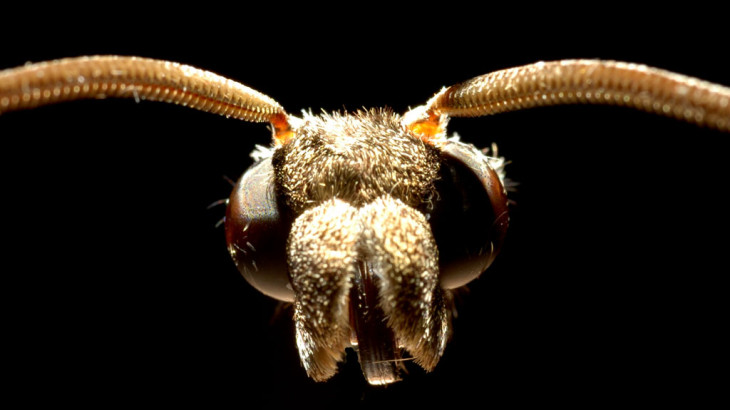Hawkmoths, like Manduca sexta, hover and track moving flowers during natural foraging in low light environments. Neural recordings from the visual part of the moth’s brain have suggested that as light levels drop, the moth changes its sensitivity to light by integrating light for a longer period of time. Such a strategy raises the possibility that the time delay in acquiring visual information would also increase at it gets darker. Hence motion tracking tasks, like feeding, may vary with the background luminance of the environment. We tested this hypothesis with freely flying moths feeding from a robotically actuated artificial flower under luminance levels of 0.3 or 300 lux. Flower motion was composed of the superposition of multiple sine waves (0.2-20 Hz), allowing reconstruction of the moths’ frequency response. By calculating the gain and phase delay, as well as the coherence, at each component frequency (a bode plot) we discovered that moths reliably track at frequencies up to about 10 Hz! As predicted by the visual processing hypothesis, we observed significantly longer phase lags in the moth’s visual-motor performance when light levels were low. This phase difference corresponds to a 30% increase in processing delay at low luminance. As a result, the moth’s overall tracking performance decreased, but only when tracking movements above 2 Hz. It turns out that if we film natural flowers blowing at a variety of wind speeds, that the vast majority of their movements are concentrated in the frequency band below 2 Hz. Therefore while the moth sacrifices some performance to visually navigate in low-light environments, it does not necessarily suffer significant costs because they maintain performance that is relevant for tracking the flowers that they prefer. The take home message is that moths slow down their visual processing to increase sensitivity to low light, but only to point where they can still track the movements of the flowers from which they feed. Any more slowing and they wouldn’t be able to keep up!
